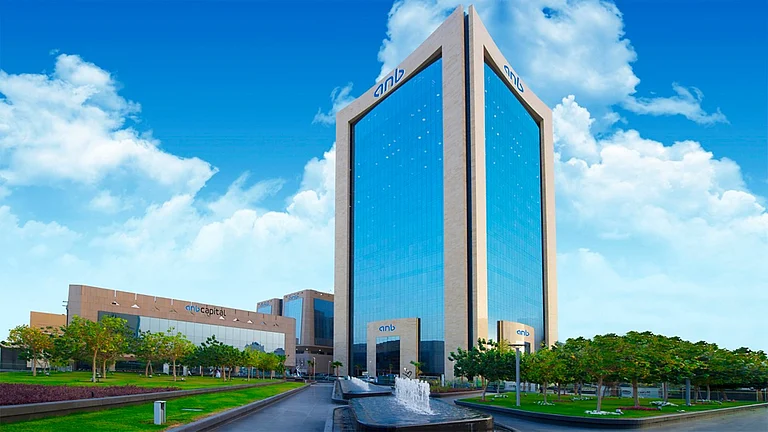Fifteen years ago, in continuation of its efforts to reduce costs and subsidies in the fertilizer sector, the government asked urea plants in India to use natural gas as feed stock. The move impacted those that used furnace oil/LSHS as the cost of conversion was substantial of over Rs 1,000 crore for each unit. In terms of the Pricing Policy of Urea, Government would have reduced the Concession Price of Urea manufactured by furnace oil/LSHS Units post-conversion to gas. Problem was being faced with respect to raising of loan for the project as the investment by these units was not getting paid back and lenders were not willing to grant loan.
CMA Sunil Bhatia, who then handled the finance portfolio in National Fertilizers limited (NFL), and dealt with policy issues, found himself in the hot financial seat, as three furnace oil/LSHS based units of NFL were to be converted to natural gas. He had to figure out how to raise the required investment of over Rs 1,000 crore for each unit. During the talks with the Department of Fertilizers, grant of capital subsidy by the government was ruled out and it was decided to work out a policy which makes project viable for Furnace Oil/LSHS based urea units converting to Natural Gas and also is acceptable to the Government.

Bhatia was actively involved in working out the model based on which policy got framed and was notified by Department of Fertilizers which ensured future viability of the unit, and did not burden the Exchequer. The consensus was that while converting units would raise the funds and execute the project, the government through urea pricing policy, would reimburse the project cost to these units over five years. “I was actively involved in the discussions. While the initial liability was on NFL, it would be evened out over five years for pay back of the investment including interest on debt,” says Bhatia.
Since urea prices were regulated, and the government reimbursed costs to ensure a specific return on net worth. The use of natural gas would reduce both energy consumption – and 70-80% expenses are related to feed and fuel in urea plants – and subsidies. But under this mechanism, NFL would not recover its capex, and earn a negative return on investment. The government agreed to reimburse costs as per older energy norms, which would imply subsidy payments at the earlier level for five years. “We calculated that the period was enough. The government also agreed to waive off the tax burden on part of the higher revenues,” explains Bhatia.
As NFL would be paid a higher amount by the government, despite lower energy use, it provided a revenue cushion. Hence, it was easy to convince lenders that NFL would have the ability to repay the debt taken for the project.. “The lenders agreed to finance a substantial portion of project cost, which was higher than existing lending norms. We raised small portion through internal sources, and were able to recover the total project cost, interest on debt and earned 12% return on own investment,” says CMA Bhatia. The only catch that the government imposed was that the NFL’s gas-based urea unit had to regularly run at 100% capacity for full recovery of the investment. It was a win-win solution for the various partners – NFL, government, and bankers.

A new variation of a similar funds-related problem occurred when Ramagundam Fertilizers & Chemicals limited (RFCL) was set up as a joint venture between EIL, a leading global consultancy in the oil and gas sector, and NFL, the second largest urea manufacturer in the country. It was formed to set up an ammonia-urea fertilizer plant, and Bhatia was associated with it as the CFO since the incorporation. “We reached a stage where 63% of RFCL’s equity was finalized – EIL 26%, NFL 26%, and FCIL 11%. The balance 37% was untied. But we had declared the zero date, and it was crucial for me to achieve financial closure at the earliest,” says CMA Bhatia. (The total project cost of the unit was Rs 5,254 crore, with a debt of Rs 3,941 crore.)
Total debt was subsequently tied up. Out of untied equity of 37%, the state of Telangana, where the plant was located, agreed to take 11%. It was the first mega project in the state, and RFCL managers, including Bhatia, met the state authorities to convince them to buy a small portion of equity.. “We held discussions with prospective investors, but nothing was firmed up. As a CFO, I had to finalize investors for the balance 26%,” explains Bhatia.
At the same time, RFCL was in talks with Haldor Topsoe (of Denmark), which was the ammonia licensor for the project for initial design and basic engineering for the ammonia plant. . “In one of the meetings, I proposed that it made sense for Haldor Topsoe to become an equity partner in a fertilizer JV that was promoted by two leading PSUs in the country. The reason: more than 90% of ammonia plants in India at that time were based on the Danish company’s technology,” remembers Bhatia.
But Haldor Topsoe was apprehensive about the regulatory mechanism, and subsidy regime in the Indian fertilizer sector. The foreign technology supplier was worried that 70-80% of the revenues earned by a urea unit was through government subsidies. What if the payments were delayed by the government, as was usual in those days? How would the plant ensure adequate cash flows for its expenses, including loan and interest payments? Would it increase the need for working capital, which would impact the project’s viability?
Bhatia had to convince the foreign supplier why it still made sense to invest in equity, despite the subsidy mechanism. “In several presentations, I walked the Danish company through various stages of India’s fertilizer policy since 1978, when the retention price scheme was introduced. I argued that since then, the government invariably tried to ensure a 12% normative return on net worth for the fertilizer units,” says Bhatia. Obviously, there were units that were inefficient and, hence, were unable to earn such a return. But the plants that were operated at capacity levels, and managed well were profitable.
The price mechanism had an inbuilt cost-plus formula. Thus, the costs were reimbursed to ensure a positive return. In addition, that was the time when the government announced a new investment policy to woo and attract potential investors and the project was getting set up under the remunerative new investment policy.“I was on conference calls for hours, especially after office hours, with the consortium partners to convince them that they had nothing to fear. In fact, RFCL’s feasibility report was based on a worst-case scenario. It stated that even if the government delayed payments by six months, IRR would be at feasible level. The numbers and calculations showed that the company would still earn adequate margins,” reminisces CMA Bhatia.
These reasons convinced Haldor Topsoe, which roped in two investors, IFU (an investment fund established by the Danish Government), and a pension fund, to form a consortium. Together, the Danish consortium picked up 11.7% equity. The balance 14.3% was picked up by GAIL, with whom RFCL carried out discussions in parallel. In the Indian fertilizer sector, RFCL became the first instance when a foreign technology supplier became an equity partner, and had a seat on the company’s board of directors.












 Just one email a week
Just one email a week